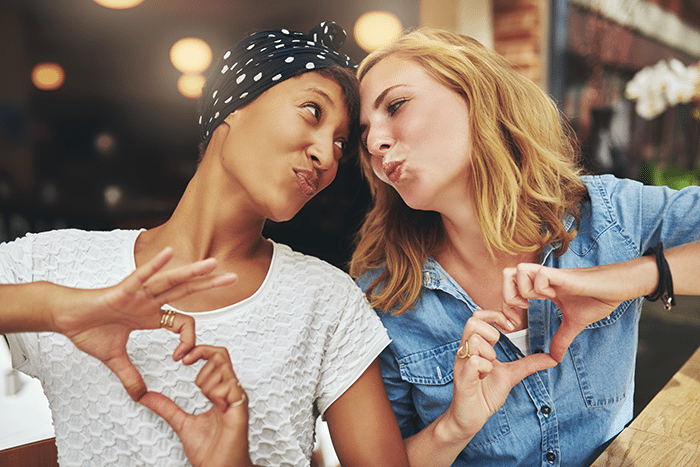9 Body Language Blunders You Don’t Know You Make
Regardless of the many different languages that may come out of our mouths, we humans share one common universal language with one another: body language. And while we are usually aware of the actions or movements our bodies take, we are often completely oblivious to the nonverbal messages we send others. Unfortunately, this frequently means we are sending the wrong message.
From an evolutionary perspective, body language has played an integral role in our species’ survival. Millions of years ago, before there was verbal language, our early ancestors communicated their needs, emotions, fears and desires with one another through a variety of gestures, facial expression and postures. Body language is so deeply embedded in our biological heritage that we still primarily communicate nonverbally.
When we interact with others, we send and pick up nonverbal cues without much conscious thought. For instance, we may think we got a closed off “vibe” from a new co-worker, but what really gave us that feeling was likely the person’s body language. Perhaps she stood with her arms crossed, or didn’t turn her body to face you when you spoke, or didn’t hold eye contact with you. Before you know it, you’ve subconsciously formulated a negative impression of her, even if the actual words that come out of her mouth are friendly.
Now imagine that scenario is flipped, and you’re the one sending negative messages to your co-workers, friends or partners? You may not intend to come across as detached, cold or aggressive, but your body language may be telling a different story. This can have significant impact on your personal and professional relationships.
Here are nine common body language blunders to keep in mind to prevent you from sending the wrong messages.
1. Slouching
Imagine someone sitting across the table from you, sitting up straight on the edge of their chair, leaning in as you speak. They are communicating interest in what you are saying and making you feel valued. Slouching conveys the opposite. When you slouch, your body is saying you are bored and have no desire to be where you are.
Slouching also projects less power than sitting or standing with good posture. Standing up straight sends signals of confidence and authority, while slumping over shows the opposite.
2. Frowning
Many of us frown all the time without realizing it. Next time you are walking to work or passing people on a busy street, look around at others’ faces. Most people wear what I’ve heard called a “screensaver face.” You may think you are not conveying any emotion or thought in particular — in screensaver mode — but often times this face looks like a scowl. I’m not suggesting you walk around town smiling at strangers like a maniac, but if you’re aware of your expression — particularly the shape your mouth is taking — you’re more likely to put on a happier, friendly face than a mean, bitter one.
3. Not making eye contact
Failing to meet the eyes of someone who is addressing you is a blatant sign of disrespect. It shows the person you are not really interested or even listening to what they are saying. Not making eye contact may also even tell the person you don’t believe in what they are saying or think they aren’t worth listening to. Would you ever tell your boss, “I really don’t care what you are saying to me right now”? Of course not. But if you don’t make eye contact with her as she speaks, your body language is saying this for you.
4. Holding eye contact for too long
On the other end of the spectrum, eye contact that is too intense can seem creepy and aggressive. Blinking is a wonderful thing. And glancing away from time to time is acceptable, and expected.
5. Not facing someone who is speaking
When someone is talking to you, you should angle your whole body — not just your face — so that you could be physically receiving what they are saying. Similar to not making eye contact, failing to turn your body toward someone who is speaking conveys disinterest. Show someone they have your respect and attention by not making them talk to your back or the side of your face.
6. Crossing your arms
I am always cold, so I am guilty of this one on a regular basis. But catch yourself when you find you are crossing your arms in front of your chest. By doing this, you are physically closing yourself off from people by creating a literal barrier between you. Depending on the context, crossing your arms can make you look awkward and uncomfortable or aggressive and defensive. If you’re cold, wear a jacket.
7. Fidgeting
Small, jittery movements — such as twirling your hair, picking your nails, shaking your leg, tapping your desk — can be annoying to those around you, and they also show people you are nervous. Sometimes fidgeting is truly just a bad habit, but such movements convey insecurity or angst. If you find yourself fidgeting, try to take a neutral position, such as resting your hands on your thighs.
8. Clenching your firsts
Unless you are about to start a boxing class, there is no real reason to clench your fists. Doing this makes you look aggressive and even violent, and will put those around you on the defensive, even if you are just talking.
9. Not respecting others’ personal space
Everyone has slightly different preferences when it comes to personal space, and this one varies from culture to culture. However, it is important to be aware of people’s expectations and desires for personal space and not invade it, lest you come across as a threat, or at least annoying. Of course, strangers largely agree to give one another more space than close family members and friends, but sometimes people need a reminder to be aware of their proximity to others.













